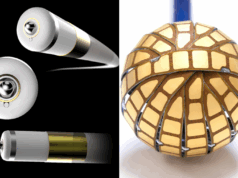Healthcare professionals performing x-ray guided cardiovascular procedures may be at higher risk for health problems including orthopaedic problems, cataracts, skin lesions and cancers, according to new research published in Circulation: Cardiovascular Interventions.
The study identified potential radiation-related health risks to professionals that perform common cardiovascular procedures using fluoroscopy.
Such procedures include coronary angiography to diagnose heart problems and coronary artery angioplasty to widen narrowed arteries.
“For experienced, busy interventional cardiologists and electrophysiologists, annual exposure to radiation is around 5 millisievert,” says Maria Grazia Andreassi, lead author of the study and head of the Genetics and Molecular Epidemiology Unit at the National Research Council Institute of Clinical Physiology in Pisa, Italy. This amount adds up to 50 to 200mSv over a 30-year career.
Compared to healthcare professionals not exposed to radiation, cath lab workers (including doctors, nurses and technicians) who were exposed to radiation for a median of 10 years had:
- 2.8 times higher odds of having skin lesion:
- 7.1 times higher odds of having orthopaedic problems; and
- 6.3 times higher odds of having cataracts.
In addition, among cath lab workers, estimated radiation exposure was highest for the interventional cardiologists and electrophysiologists. The odds of having medical problems also increased for workers with more than 16 years of history in the cath lab. After adjusting for age, gender and smoking, workers with more than 16 years of history in the cath lab also had three times higher odds of having cancer.
Cath lab workers also had elevated rates of high blood pressure and high cholesterol, the study found, but relatively low rates of cardiovascular illness. However, previous epidemiological studies have linked chronic radiation exposure with long-term cardiovascular effects, Andreassi says.
“Occupational doses of radiation in cardiovascular procedures guided by fluoroscopy are the highest doses registered among medical staff using X-rays,” Andreassi says. “Interventional cardiologists and electrophysiologists have a two to three times higher annual exposure than that of radiologists, as they are closer to the radiological source and experience radiation exposure with the patient, whereas diagnostic radiologists are generally shielded from radiation exposure.”
The new findings are based on an Italian survey answered by 466 workers who had an average of 10 years’ experience working in cardiac cath labs, plus 280 professionals who worked in other settings. Findings were adjusted for the fact that the cath lab workers were more likely to be smokers, as well as other relevant factors, Andreassi says.
Noting that intensive training in radiation protection can reduce occupational doses dramatically, Andreassi says that every effort should be made to raise radiation awareness in the professional communities of interventional cardiologists and electrophysiologists. “Unfortunately, cardiologists pay little heed to monthly or cumulative reports of radiation exposure. And, recent studies confirm that simple, effective protection measures-such as a lead curtain, protection glasses and thyroid collars-are not used by the majority of exposed cardiologists.”
Study limitations noted by researchers included: whether survey respondents themselves chose to participate (if they had health problems, may have been more motivated to do so) and that radiation doses were self-reported, not directly measured. A direct cause-and-effect link between radiation exposure and health problems cannot be inferred from the results of this study.
The Italian Ministry of Health funded the study.









